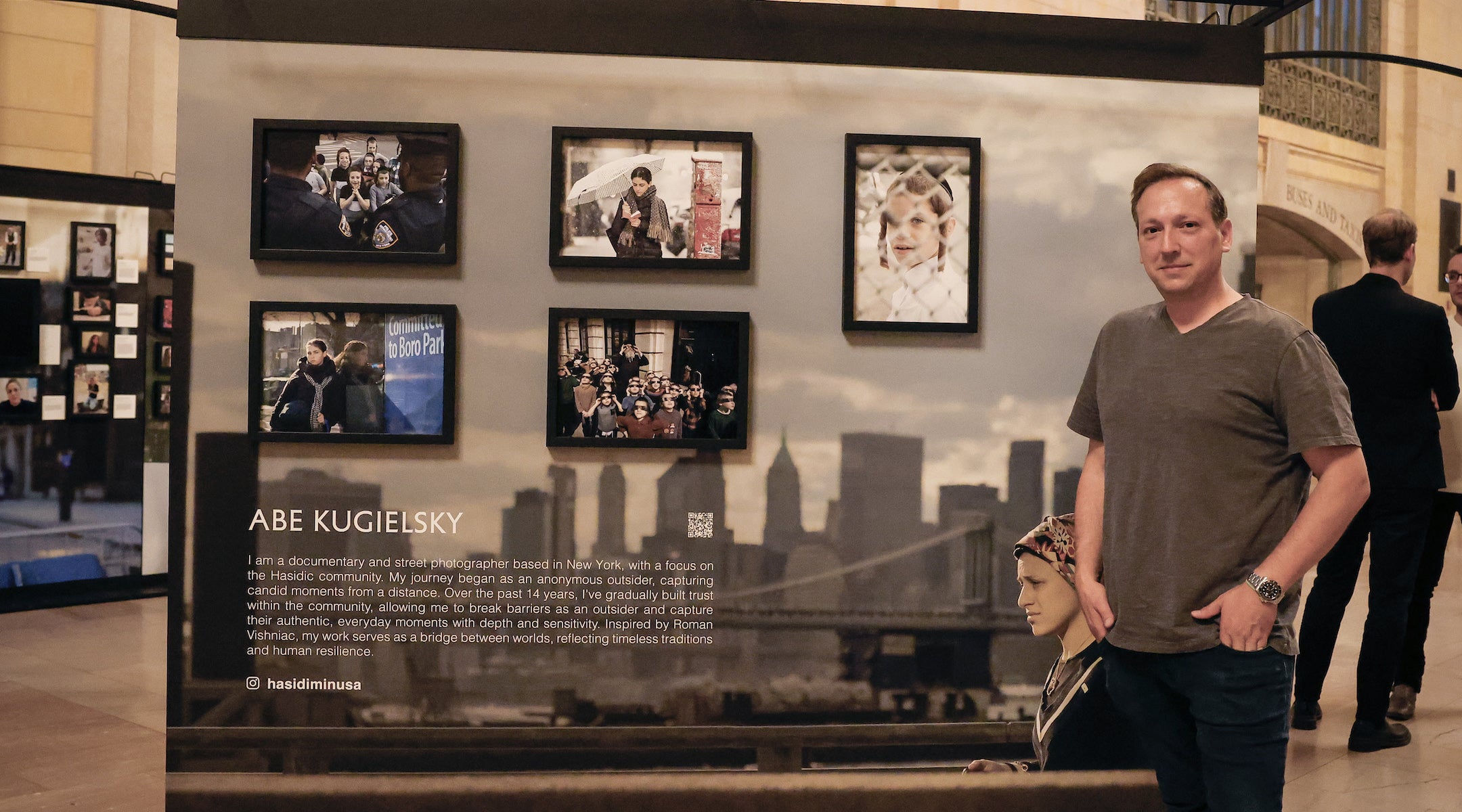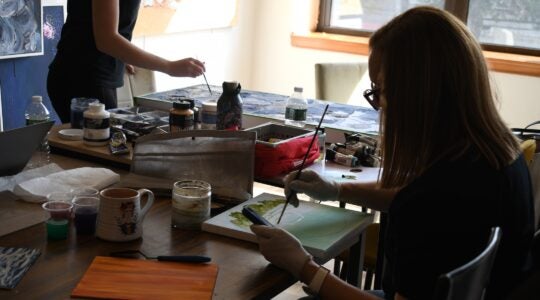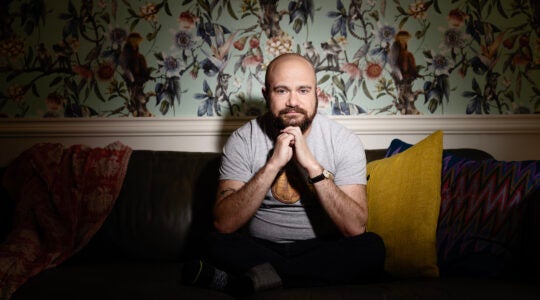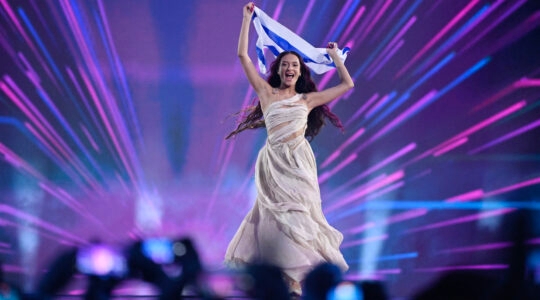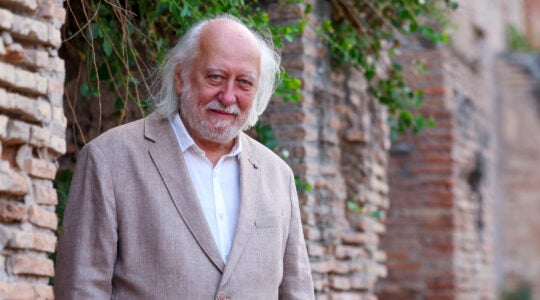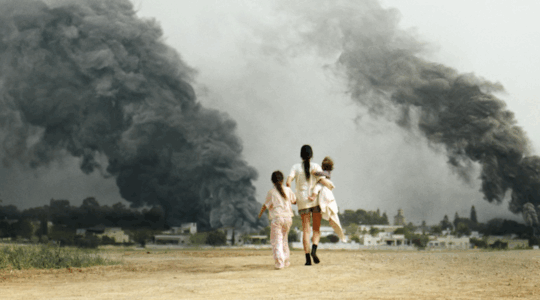When Abe Kugielsky first began photographing the Hasidic Jewish community in Borough Park, Brooklyn, in 2010, he was an outsider with a camera, met with resistance from a community unaccustomed to being documented.
But by 2017, he had amassed a bank of roughly 50,000 photographs, and decided it was time to start posting his images to an Instagram account he called “Hasidim In USA.”
Today, his account has drawn 80,000 followers curious for a glimpse inside a traditionally private world. And this month, it has also landed him a place in Humans of New York’s “Dear New York” exhibition in Grand Central’s Vanderbilt Hall. The free exhibition, curated by Brandon Stanton of the online photo sensation Humans of New York and including dozens of local photographers, runs until Oct. 19.
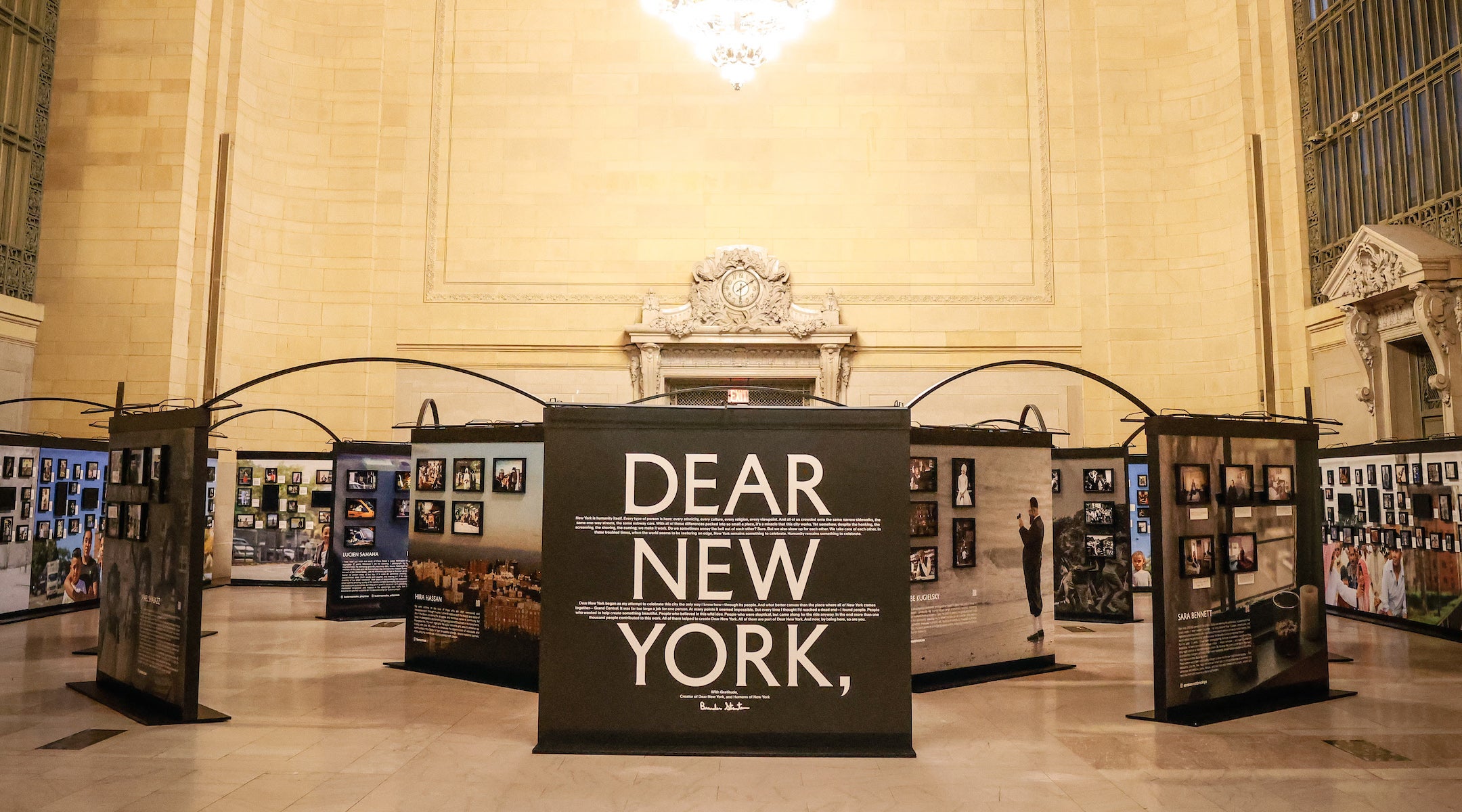
A view of Humans of New York’s “Dear New York” exhibition in Grand Central’s Vanderbilt Hall, running from Oct. 6 to Oct. 19. (Courtesy Abe Kugielsky)
By day, Kugielsky, who is 45 and identifies as Modern Orthodox, runs a Judaica antique auction house in Cedarhurst, Long Island. But his photography, and efforts to gain inroads in the Hasidic community, have become his true passion.
“Judaica is my full-time job, but I will close shop whenever I feel like I need a day off to go,” said Kugielsky. “It’s very therapeutic to me when I go out to shoot, I’m in my own little bubble, my own zone.”
This interview was condensed and lightly edited for clarity.
JTA: What first drew you to photographing the Hasidic communities in New York?
Kugielsky: When I moved to Brooklyn after we got married, my wife had a job in Borough Park. I would drive her to work every day. I had started street photography as a hobby back in Israel a little bit, and then got married and I let go of it. But when I started visiting Borough Park every morning, and I was getting that Roman Vishniac vibe by seeing the scenes, and I figured, I’ll pick up a camera and start documenting something that’s been untouched in New York.
It’s been very popular in Israel. There’s so many photography books on Orthodox life in Jerusalem, but there’s nothing about Hasidic life in America. There’s one book from like 1974, a small book with some photos, but that’s about it. It’s really very little. So I felt like it was an untouched niche, and I picked up a camera and I started photographing.
How do you build trust with your subjects in a community that is often described as insular?
To see someone walking on Borough Park with a camera taking pictures is not common. It’s not Mea Shearim [the Jerusalem neighborhood] where we have tourists and Americans and photographers. This is very uncommon, so there was a lot of fear of resistance, and of course, the resistance came. So it started off really more in hiding from distance, and over time, I built trust in the community to a point where they celebrate me.
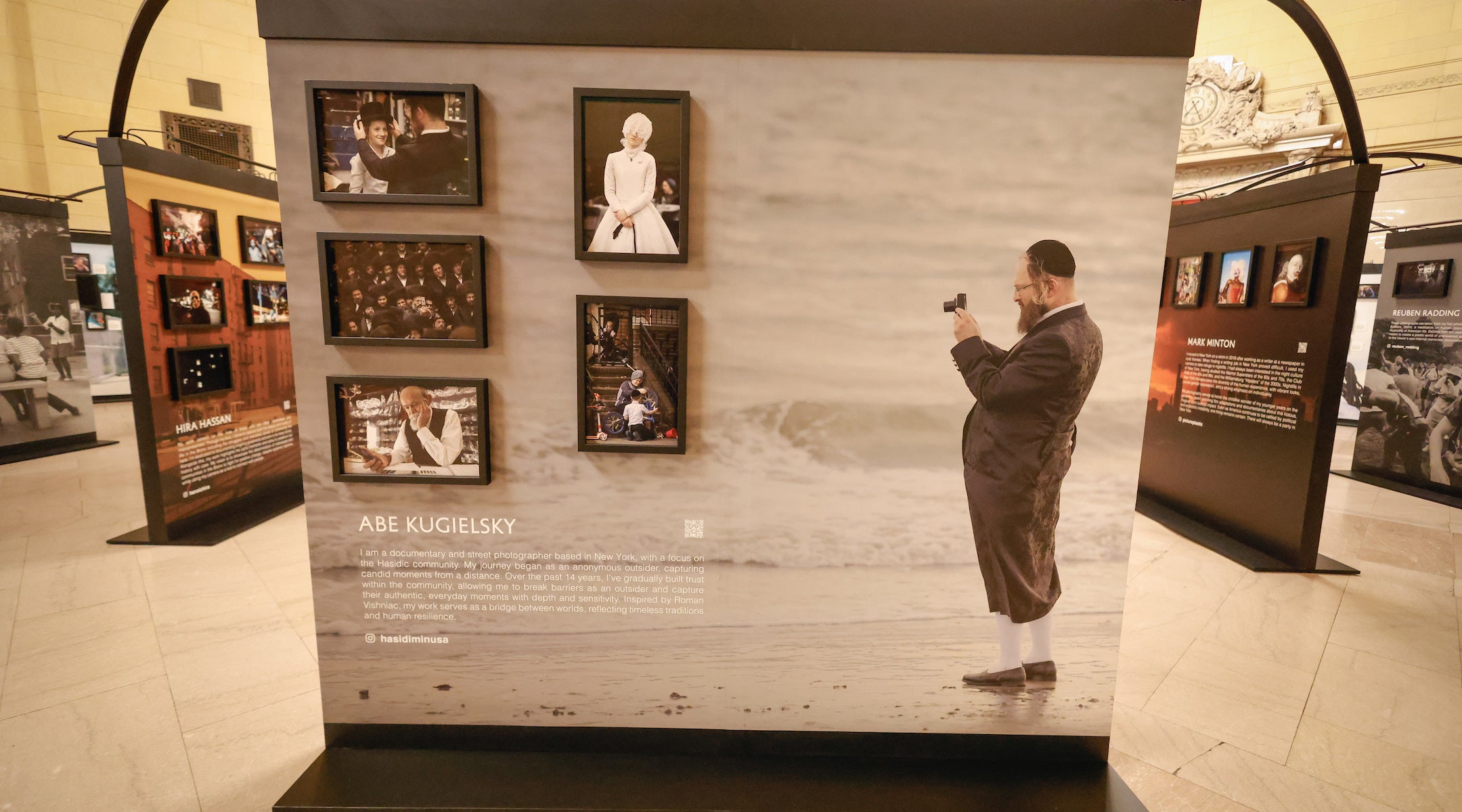
Abe Kugielsky’s installation at Humans of New York’s “Dear New York” exhibition in Grand Central’s Vanderbilt Hall, running from Oct. 6 to Oct. 19. (Courtesy Abe Kugielsky)
I made it my goal to post in a very positive light, either a positive caption or a positive scene or a positive story, to show them I’m not here to bring out what everyone else has been doing. I realized over the years that it’s really rooted a lot in generational trauma, where, whenever media came into Borough Park or Williamsburg, it was always for a negative story, and that’s where the resistance really came from. So over time, when they recognized that my work is not with that goal, they started to appreciate it more and more.
Can you tell me more about the response from the Hasidic community to your work?
I started off with an article in a local Yiddish magazine, and then a couple of months later, another article and I came out publicly with my name, my identity, so people started recognizing me more. And over time, I started getting more and more positive feedback.
I remember a woman in Williamsburg stopped me once, and she said, “I want to tell you that your photos made me fall in love again with my own culture.” So it really had a certain impact on the community, recognizing that these photos tell a positive story. It tells the story of the community that no one else does in a positive light.
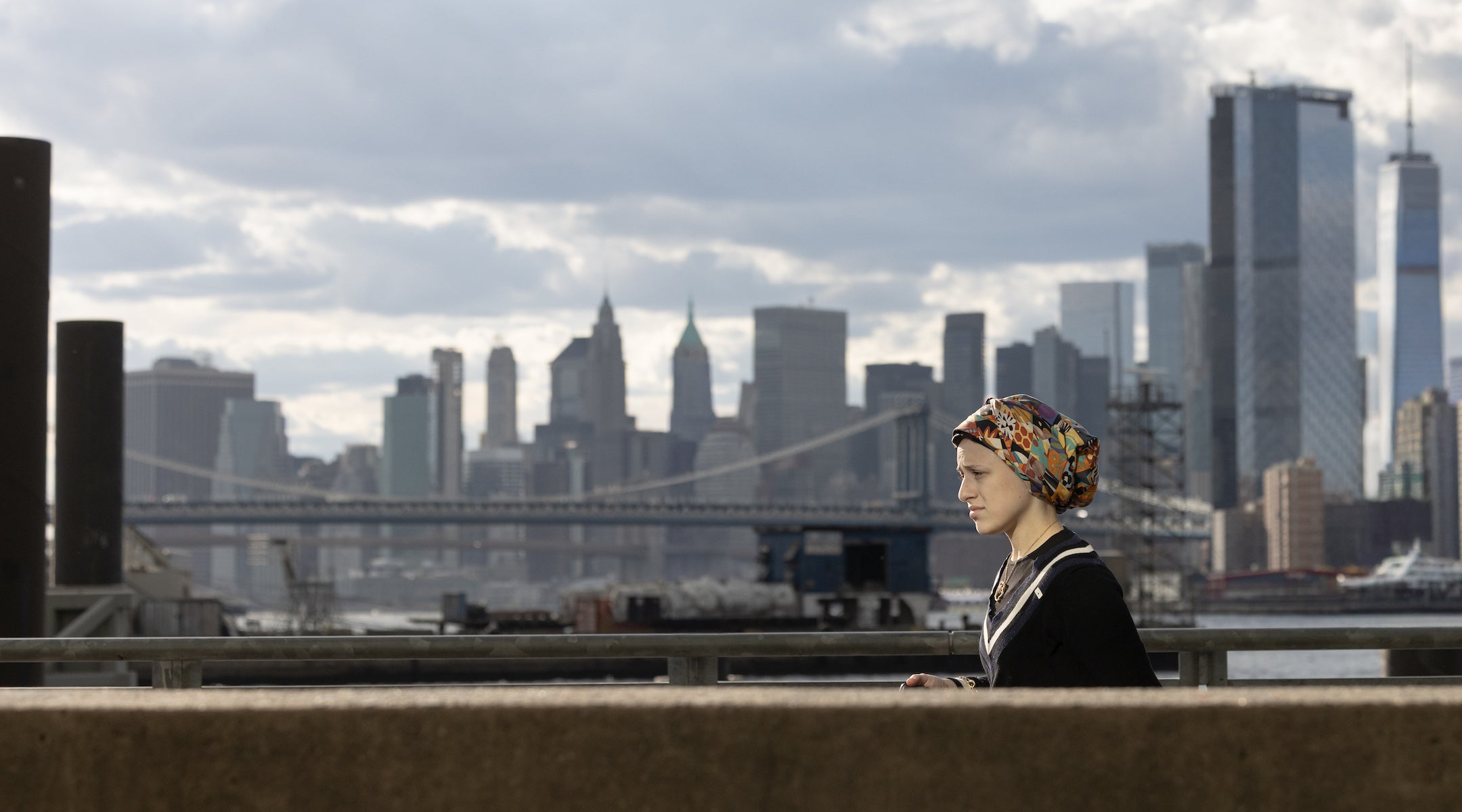
“A Bridge Apart” by Abe Kugielsky. (Courtesy Abe Kugielsky)
It really shifted to the point where, if I walk down Williamsburg, people stop me and ask me for a selfie, and people will DM me and say, ‘Hey, there’s an event going on here, please come down and photograph.” My goal was to go in deeper and deeper, more and more intimate, and I’ve gotten there. Especially this past summer, we had some invites into family life, which is a whole new level that I’ve been really trying to get to.
What kinds of reactions from the public to your work have surprised or challenged you?
Of course, I get a lot of antisemitic comments from time to time with DMs. Anyone who posts anything Jewish nowadays gets them, but I’ve had a lot of interesting positive feedback from non-Jews worldwide. I’ve had people in Iran reach out to me, and I’ve heard from people in Middle Eastern countries, in Germany, Poland. I think they love the concept where they can look into another culture, have a window into another culture, something they don’t get to see.
Do you have a favorite image from the exhibit, and what makes it stand out to you?
I have one great image that I really, really love. This was a silver shop in Borough Park I walked into and I asked the owner, an older Hasidic Jew, if I can photograph him, and his response is, “What do I need it for?”
I have an album on my phone with photos I downloaded from Brooklyn Public Library, old images from Williamsburg taken by a photographer in 1964, and I figured, let me show him what it looks like looking back at photos from 50 years ago. I started showing him on my phone. He was scrolling through the photos, and I said, look how beautiful it is to look at pictures from 50 years ago.
But then he froze on a certain picture, and his demeanor changes, and he goes, “This is my wife.” He found a picture of his wife and his first newborn son from 50 years ago in those photos, so I captured that moment where he’s really reminiscing about those years.
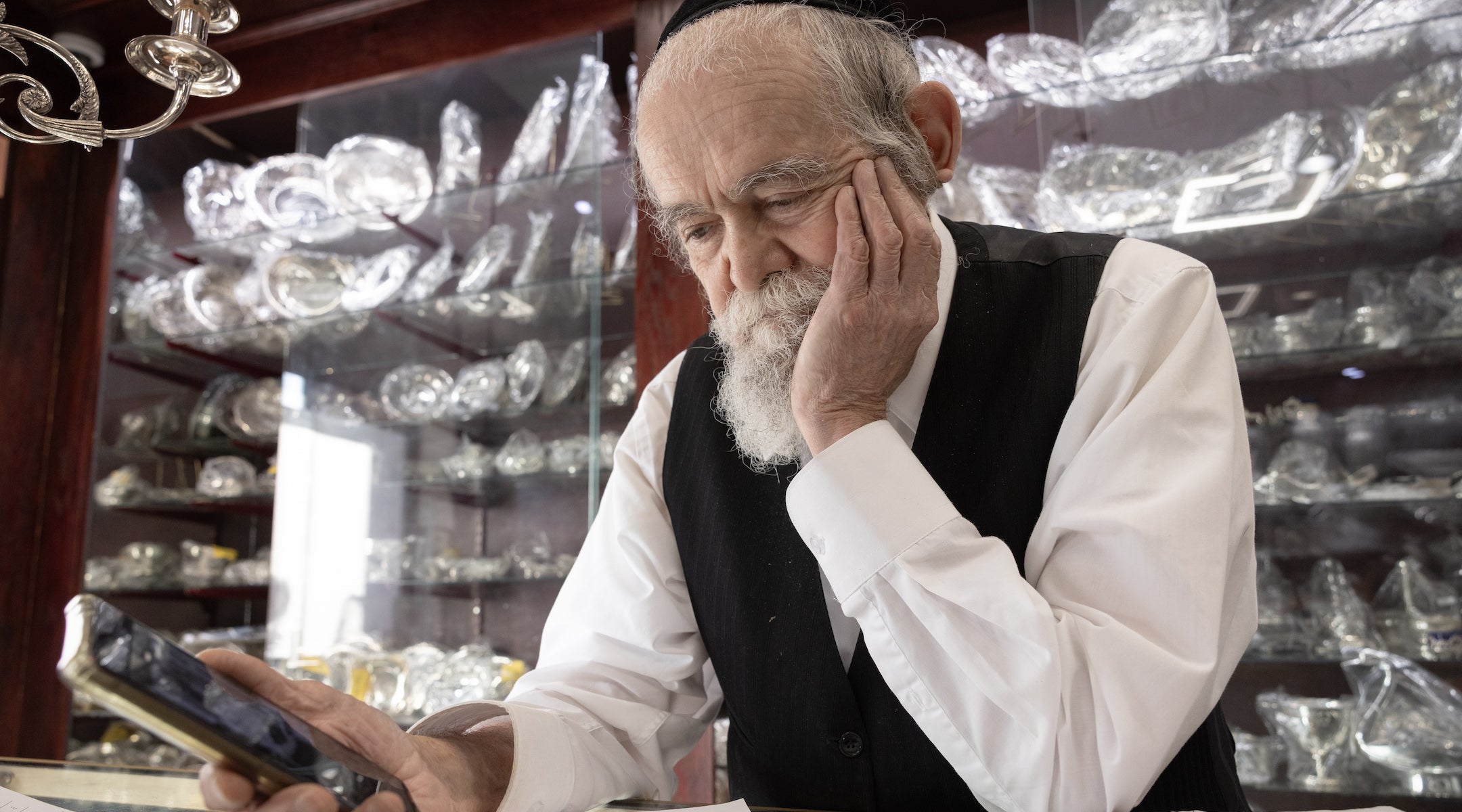
“Silver Memories” by Abe Kugielsky. (Courtesy Abe Kugielsky)
Humans of New York has drawn criticism for a series focused on aid workers in Gaza as well as for featuring a member of Neturei Karta, a small anti-Zionist sect of the Orthodox community. Was that something you thought about before deciding to participate?
I was tagged when he posted his request for people to submit. I didn’t follow him, it’s just not really my style of work, he’s more storytelling. I went into his page, and I saw all these posts, I wasn’t sure what to make of it.
The vibe that I got was I didn’t feel an antisemitism there. I felt like he was more going with the trend, showcasing Palestinians from Gaza or Neturei Karta, more from a place of ignorance.
I believe a lot of New Yorkers, a lot of Americans, a lot of people worldwide, don’t really know and understand the conflict. It’s just in style now to hate, and it’s in style now to side with one side or the other without really understanding.
I didn’t give it a lot of hope when I submitted my photos, and I was actually surprised that he chose my photos to be included, and throughout my conversations with him, I understood that he really doesn’t understand much of the conflict.
Have you received any critical feedback about your involvement in this project?
Very, very little. I think one or two people commented like, why would you do this? But for me, A, It’s an opportunity for me, for my work, to showcase my work out there more, and, B, I thought it was so important to have a representation of Jewish life, or Hasidic life, Orthodox life, in such an important exhibition.
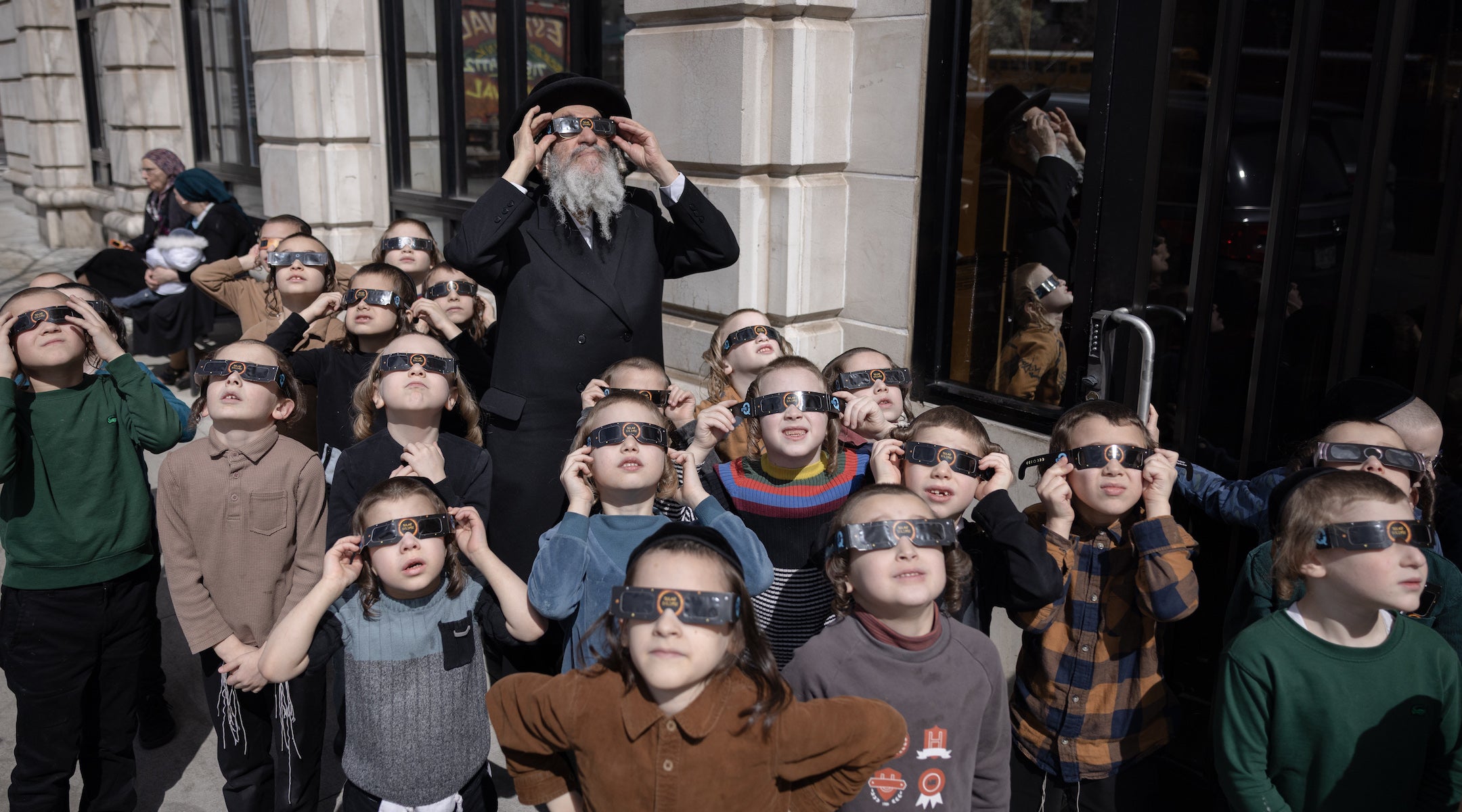
“Brooklyn Skies” by Abe Kugielsky. (Courtesy Abe Kugielsky)
What are you hoping people take away when they encounter your Grand Central exhibit?
What I’m expecting people to take away is really to see the humanistic side of this culture. People could be living literally a block away from the community, and not really know the community, and not understand them.
I’m hoping that this gives them a little bit more of a humanistic view of the Hasidic community, where they live, their life, their culture, their religion. After all, we’re all human, we all coexist in the same city.
JTA has documented Jewish history in real-time for over a century. Keep our journalism strong by joining us in supporting independent, award-winning reporting.
